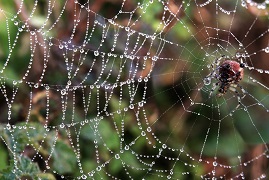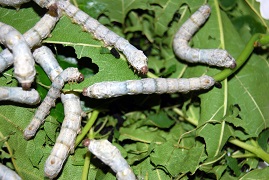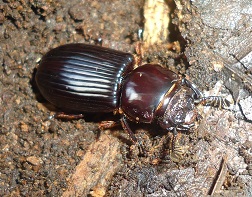The bioeconomy may be dominated by plant-based processes, but the role of animals in the bioeconomy is also notable.
This article was first published on the site of NNFCC.

In the bioeconomy, we are well-used to processes involving plants. In the overwhelming majority of cases, plants are the source of biomass from which biobased products are derived, and it is plant biomass that is processed and burned to produce bioenergy. Thus, rightly so, plants get the bulk of the attention, but the role of animals in the bioeconomy is also important, if at a lesser scale. The obvious difference is an ethical one: there is no concept of plant welfare (although this does manifest itself in a way, through forestry management, and farmers seeking to find the optimal growing conditions for crops), and it is welfare concerns that see animals rarely involved in modern industrial processes. However, this does not preclude an involvement of animals in the bioeconomy, and indeed, an increasing number of bioeconomy processes and products are starting to take inspiration from animals: biomimetics is a field dedicated to imitating nature in industry, taking advantage of the millions of years of evolution that have produced efficient processes. The bioeconomy is no different in the way it can benefit from such an approach.
Spider silk: a miracle material
It has long been known that spider silk has extraordinary material properties. Its incredible tensile strength is well-known – a highly desirable trait for fibres – as well as its resistance to fracture. In the biobased products sector, it is often seen as a ‘holy grail’ product: one with a great many applications, which, if developed, could be revolutionary.
The problem with spider silk is the fact that in nature it is only produced by spiders, and only in certain situations. Farming spiders is inherently difficult, if not impossible, due to their solitary and highly territorial nature –we’ve all seen the David Attenborough clips of the female spiders eating their mates – although researchers in the Oxford Silk Group have managed to successfully create conditions in which spiders produce silk industrially. The spiders are sedated and restrained, and their spinnerets connected to spools, which wind as the spider continually produces silk. The difficult part here is the initial process of connecting the spiders’ silk threads to the spools, which is delicate and often time-consuming – unfit for industrial scale production – not to mention the ethical concerns with using sedated spiders, although the researchers claim the spiders are comfortable during the process.
Thus, viable commercial production of spider silk has become an area of much interest in the bioeconomy. Several approaches have been developed, with many companies such as AMSilk, Bolt Threads, and Spiber opting for the common biochemical approach of fermentation to produce the proteins, before subsequently spinning them into fibres. Producing spider silk from genetically modified bacteria is a proven technology, but one that comes with high costs – particularly in the downstream processing wherein the proteins are separated from the fermentation medium, and then spun. These costs remain prohibitively high, with no applications for the fibres able to support such costs on the market. A similar process was developed by Nexia biotech, which also involved animals: the company had, somewhat bizarrely, developed ‘spider goats’ –genetically modified goats whose milk contained all of the requisite proteins for spider silk fibres – and, much like with the fermentation processes, span fibres from the proteins produced in their milk. This process too, however, proved to be prohibitively expensive, and Nexia has since gone bankrupt, although some scientists are continuing research into spider silk goats’ milk.

The company closest to producing spider silk in a cost-effective manner is Kraig Biocraft, who have taken an altogether different approach, still involving animals. The company has developed genetically modified silkworms, which spin the spider silk fibres themselves, in a process not dissimilar to traditional silk production. The company claims to have production costs over 100 times less than companies using the fermentation approach, and this year Kraig have announced the first commercial production of spider silk, initially remaining confined to military applications, the company hopes to enter the high-quality fabrics market in the near future. This would represent the culmination of years of research and development to bring one of nature’s most remarkable materials into the sphere of human use.
The role of animals in the bioeconomy
However, the role of animals in the bioeconomy is not restricted to the provision with products and materials. Biomimetics also concerns itself with processes as well as products, and it is in this area that animals can help us deal with the issues surrounding our main source of biomass: plants. When dealing with plant biomass, lignin has become the bane of many a biobased process. The complex polymer is one of the three major components of lignocellulosic biomass. As far as biorefinery is concerned, it is generally the cellulose that we are most interested in, but in order to access it we must first separate it from the lignin that reinforces it. This can be a physically and chemically intense process, which in turn makes it expensive. More efficient methods of processing lignocellulosic biomass are always the subject of much interest in the bioeconomy, and it is from animals that we may draw inspiration to pursue such methods.
Animals have already developed methods of processing wood: many animals rely on woody plants as a food source, and it is from these animals that insight can be derived. The majority of these animals are able to digest wood through an extensive gut flora: microorganisms living in the animals’ digestive systems that break down the lignin themselves, leaving the animals’ digestion to work on the cellulose. Industrial processes have thus focused on these microorganisms, as although they require very specific environments to function in, these conditions are less intense to produce.

Recent research has taken this concept further, inspired by Passalid beetles. These beetles (aside from being of great interest to coleopterists for their curious social behaviour) utilise a compartmentalised digestive system to enable them to digest wood. The beetles’ gut flora are highly segregated, allowing for procedural breakdown of the lignocellulosic biomass for maximum uptake of nutrients. American researchers are now seeking to replicate this in a biorefinery concept: by compartmentalising the process, different microbes are able to ‘work’ on the breakdown of biomass. This contrasts with traditional microbial processes, which use either a monoculture – in the case of fermentation – in order to protect the microbes from competition, and to maintain favourable conditions for production of desired chemicals, or diverse polyculture – of which the classic bioeconomy example is anaerobic digestion – in which the conditions are less specific, and the microbes work together to perform the process. The Passalid beetles have managed to find a ‘middle ground’ here, which could lead to more efficient biorefinery in future, if it can be successfully replicated.
But it is not just through microbial assistance that animals can process woody biomass: the gribble – a small crustacean well-known in harbour communities as a menace that eats the wood of boats, piers, and the like – has a digestive system that breaks down the lignin in wood completely without microbial input. Recently, scientists from the University of York have identified the proteins that are key to this process, and believe that this could result in more cost-efficient biorefinery, by offering a pre-treatment for biomass that this neither expensive nor energy-intensive, without having to conform to the finnicky demands of microbes.
By-products from the food industry
Of course, as far as animals are concerned, their biggest use to humans is as a source of food – every year millions of animals are raised to be eaten. Ethical debates around this aside, these animals in turn produce many thousands of tonnes of by-products which often simply go to waste, but the bioeconomy has shown us that there are applications for these by-products too.
The obvious such by-product here is manure. Anyone remotely familiar with what we get up to here at NNFCC will know that bioenergy, particularly anaerobic digestion, is a big part of what we do, and manure is a very viable feedstock therein. The key advantage manure has over other AD feedstocks is that it does not take up cropland otherwise used for food – as is the case with energy crops – and it is also not a waste that would be prevented in an economy that conforms to the waste hierarchy, as is the case with food waste. Manure obviously favours small-scale local generation, and many farms in the UK with large animal herds are now looking to build on-farm anaerobic digesters, in order to become energy self-sufficient, and to also potentially support their income through tariffs by exporting any generated biogas to the national grid.
There are, however, more innovative uses of animal by-products. One such instance has been the development of chitosan: a plastic produced from the chitin present in prawn shells. For countries where prawns make up a significant part of the diet, the waste shells often simply end up in landfill, but can be processed to produce a plastic film with remarkable properties. It is very useful in a medical context, as it is biocompatible, meaning the body doesn’t reject it, and it also possesses antimicrobial properties, making it a useful plastic for packaging medical equipment. Researchers are also looking to develop a chitosan-based film for plastic bags: an application for which chitosan is well-suited, being biodegradable. Of course, introduction of such plastic bags would require education as to the conditions in which the plastic will biodegrade, which may require industrial composting facilities. There is also research ongoing into chitosan plastic bags with the curious property of absorbing oxygen. This would be significant in food packaging, as it would extend the shelf-life of food, reducing food waste, much of which is thrown out by shops despite still being edible.
Though here is no direct role for animals in the bioeconomy processes, said processes could not happen without them.
Reducing the burden on animals
Lastly, the bioeconomy also has a potentially important role to play in taking away industrial effort being put upon animals, particularly in the wake of increasing concerns about animals as food, both from an ethical and environmental perspective.
It is here that microbes come to the fore. Above we discussed how animals were able to outperform microbes in some contexts, but as fermentation technologies develop, microbes are able to produce important nutrients in a much more sustainable manner than intensive farming can. Classic example of such a situation is salmon farming: in order to increase the fat-richness of the farmed salmon, they are often fed omega-3 supplements. Ironically, these supplements tend to be derived from the oil of fish caught in the wild, such as cod. This is a highly inefficient system – catching fish in order to rear other fish makes no sense beyond the latter fish being more commercially viable – but the bioeconomy has been able to ‘break the loop’ through production of omega-3 from algae. Consumers will be more familiar with microbial meat substitutes such as Quorn, which have become commonplace.
While plants will continue to be the main foundation upon which a sustainable bioeconomy is built, there is still important role to play for animals in the bioeconomy, if only in specific applications.
Interesting? Then also read:
Omega-3 fatty acids produced from corn by marine algae
Lignin makes a take-off across the board, says Ludo Diels (Vito)
Genetically engineered spider silk
